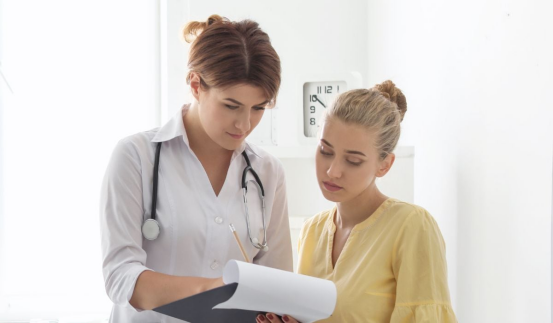Breast cancer stands as one of the most prevalent types of cancer affecting women worldwide. In the United States, it accounts for almost 30% of all new cancer cases among women annually. Being aware of the initial indications of breast cancer is crucial for ensuring swift diagnosis and treatment, which can significantly enhance treatment results and the overall quality of life for those affected.
This discussion details the typical symptoms of breast cancer and provides guidance on identifying these signs at an early stage.

Breast cancer symptoms can manifest in various ways, and certain alarms should never be overlooked. Below are some frequent symptoms that might suggest the presence of breast cancer:
- A lump or thickening in the breast or armpit
Detecting a new lump or finding a thickened area either in the breast or the armpit is typically one of the most evident early signs of breast cancer. Though many lumps aren't cancerous, it is vital for a healthcare provider to evaluate any new or abnormal lumps in order to determine whether further diagnostic testing is necessary.
- Changes in breast shape or size
Changes in the breast size or shape without any clear explanation, or noticeable swelling in specific areas of the breast, may indicate breast cancer. This is often due to unusual tissue growth within the breast, occasionally leading to visible physical changes.
- Nipple discharge or inversion
Unexpected discharge from the nipple, particularly if it is either clear or bloody, could be indicative of breast cancer. Additionally, if the nipple appears to be inverted or retracted, meaning it is drawn inward rather than pointing outward, it’s an early sign worth medical evaluation.
- Breast skin changes
When cancer affects the skin of the breast, it may cause noticeable changes such as dimpling, redness, or textural alterations resembling that of orange peel. Such changes might occur due to fluid collection or inflammation, as cancer cells block the lymphatic channels within the breast tissue.
- Chest pain or discomfort
While breast pain often arises from non-cancerous conditions, persistent or atypical pain should not be dismissed, as it might be a symptom of breast cancer. Pain that is related to breast cancer is usually localized in a specific area and generally lacks tenderness.
- Tingling, burning, or numbness in the hands and feet
Peripheral neuropathy, often linked with some breast cancer treatments, can lead to sensations like tingling or numbness in the extremities. This symptom also potentially surfaces during the early stages when the disease impacts nerve function.
Breast cancer might be more prevalent than you realize.
Detecting these symptoms early and consulting a medical professional promptly is paramount, as it allows for timely evaluation and suitable medical intervention, which is crucial if the situation demands it.
Breast cancer is an alarmingly common health issue, especially among women who are middle-aged and older. According to the American Cancer Society, an estimated 310,720 new cases of invasive breast cancer and 56,500 incidents of ductal carcinoma in situ (DCIS) are expected in the U.S. in 2024 alone. Tragically, around 42,250 women may succumb to breast cancer within the same period. Typically, the average age for a breast cancer diagnosis is 62, signifying that half of these cases involve women aged 62 or younger. Nonetheless, breast cancer can still strike younger women, although it's less usual among women under 45. The likelihood of a woman in the U.S. developing breast cancer over her lifetime is approximately 13%, which translates to about one in eight women. This significant statistic underscores the necessity for awareness and routine screenings, especially for those who face higher risks of developing the condition.
Breast Cancer Treatment Alternatives
The treatment course for breast cancer hinges on the specific type and stage of the disease. Among the treatment options commonly pursued are surgical interventions to remove tumors, radiation therapy to eliminate cancer cells, and chemotherapy aimed at treating the cancer throughout the patient’s body. Certain treatments, like hormone therapy, are particularly tailored to address specific breast cancer types. Individualized treatment plans are crafted to suit the unique needs of each patient, ensuring optimal care.
Conclusion
Being informed about the signs and symptoms of breast cancer is vital for early detection, potentially leading to a broader range of treatment options and improved outcomes. Although not every breast lump or change signifies cancer, discussing unusual symptoms with a medical professional is important for accurate evaluation and diagnosis. Incorporating regular screening, self-examinations, and educating oneself about risk factors facilitates proactive management of one’s health. Despite the seriousness of breast cancer, through careful vigilance and prompt detection, individuals can approach their treatment journey with well-informed assurance and confidence.





